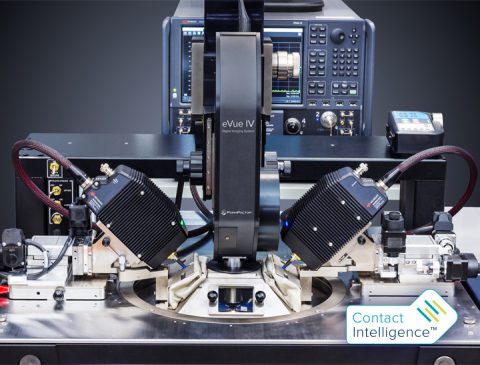Demands for mission critical wireless services, such as autonomous driving and telehealth, require higher data transfer rates and lower latencies. Such applications are now driving the use of radio frequencies (RF) at 28, 38, 60 and 73 GHz for the emerging 5G mobile communication systems.
Wafer level RF measurements of devices or circuits for 5G applications are extremely challenging due to huge system losses and calibrated state at the probe tips valid only for about 10 minutes. A new technical paper from FormFactor’s Choon Beng Sia is now available that presents a novel method of probe-tip power calibration for S-parameters calibration which is shown to greatly improve DC biasing accuracy, S-parameters measurement accuracy and post-calibration stability up to 110 GHz.
The new method allows precise and low probe tip source power biasing of -20 dBm, without affecting calibration performance. It also increases system calibration stability to more than 4 hours, giving microwave engineers adequate time to test their RF devices and circuits by avoiding the need to perform frequent re-calibration, greatly enhancing test throughput.
The paper covers the following:
- Introduction to the challenges of RF measurement for 5G applications
- The importance of having accurate and consistent probe-tip RF source power
- Choon’s proposed probe-tip power calibration method for S-parameters measurements
- The data and results of this new method
An accurate and stable wafer-level 110 GHz system is needed to support measurements of devices and circuits for 5G applications. This novel method of probe-tip power calibration with S-parameter calibration, named Choon’s probe-tip power calibration method, is demonstrated to improve DC biasing accuracy, S-parameters measurement consistencies and accuracy as well as post-calibration stability. Using this probe-tip power calibration method, 110 GHz system calibration stability is improved from 10 minutes to more than 4 hours, greatly improving the measurement throughput of such test setup, making power calibration mandatory for achieving accurate wafer-level S-parameters measurements.
To download this paper, click here (PDF).
